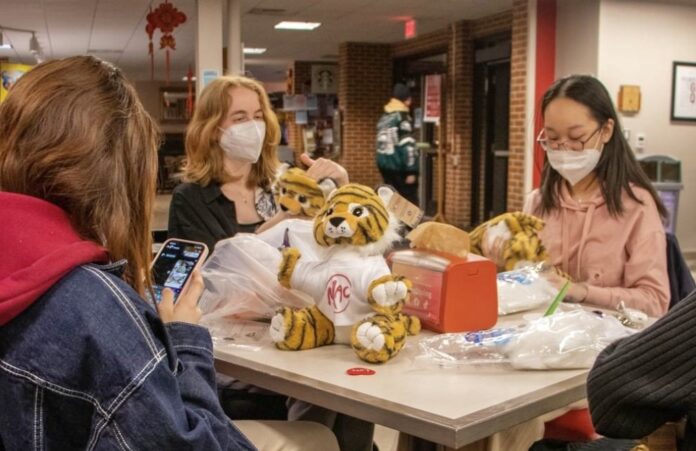The Lunar New Year took place on Tuesday, Feb. 1, and the Muhlenberg community has had several events to celebrate. On Tuesday, Feb. 8, Muhlenberg’s Wood Dining Commons had dumplings, chicken and broccoli stir fry, lion’s head soup and more to kick off the Lunar New Year celebration. On Thursday, Feb. 10, the Muhlenberg Activities Council held a stuff-a-plush event with tigers for the Year of the Tiger.
Also on Thursday, Feb. 10, the Asian Student Association, the Chinese Language Table, the International Student Association and the Office of International Student Support hosted a roundtable discussion in the annex of General’s Quarters to discuss the Year of the Tiger. Students and faculty from a variety of backgrounds came together to discuss what the Lunar New Year means to them.
“It’s so great to get a chance to see everyone again, colleagues, students and friends that I haven’t seen since the pandemic, at least in person.
-Casey James Miller
Individuals in the room began to share their experiences, both internationally and domestically, surrounding this important day. Some talked about traditional rituals like gathering with family, buying new clothes, getting haircuts, cleaning the house and throwing away old items. The presentation and students described typically large family reunions, fireworks and late night festivities to welcome in the new year. On the first day of the new year, families exchange red envelopes known as hongbao or ang pau. These envelopes are given to everyone in the family who is not married, and contain money. On the first day of the new year, there are also lion and dragon dances, known as wulong or wushi. It is important to note that while traditions and rituals vary depending on the country, the central ideas of the Lunar New Year remain consistent throughout. The Lunar New Year is a fresh start with several symbols that bring about good fortune and prosperity for the coming new year.
A huge part of the Lunar New Year for the individuals who shared their experiences at the roundtable discussion included gathering with family. International students shared that during the new year, schools and workplaces are closed, so everyone in their families would gather for a celebration. A student from China talked about the new years’ spectacular on the China Central Television Network with dancers, singers and huge performances.
There are a lot of traditional stories behind the new year celebrations, one of them being the story of Nian, who is a mythical monster who preyed on villagers every new year, until one year an old man appeared and decided to stand up to the monster. He decided to hang up red paper decorations like lanterns and firecrackers to frighten Nian away. So, it is a tradition to hang up all sorts of red decorations on the Lunar New Year, which welcome strong virtues of fortune and good luck.
Casey James Miller, assistant professor of anthropology, spoke on the roundtable discussion, saying, “It’s so great to get a chance to see everyone again, colleagues, students and friends that I haven’t seen since the pandemic, at least in person. It feels really nice to be able to keep the tradition going and to celebrate the new year. It was great to see so many people come out and attend the event and share their stories and learn about the Lunar New Year.”






















